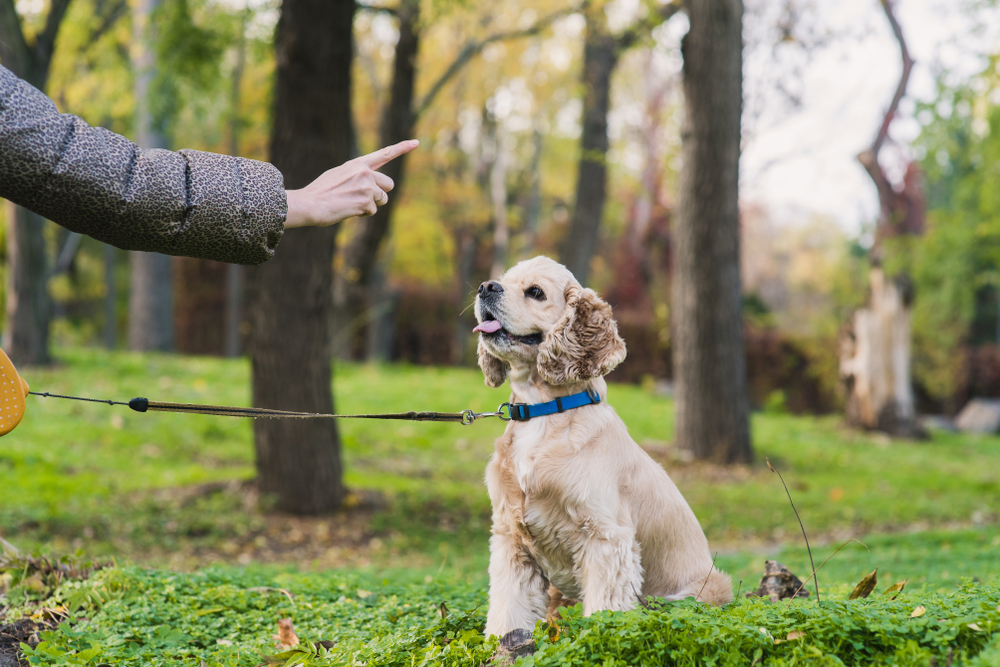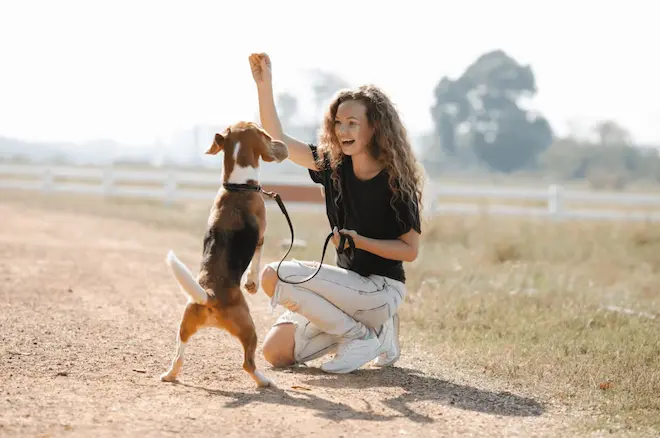Discover proven dog training tips and simple tricks that work. Learn how to train your dog effectively with easy, vet-approved methods in 2025.
Introduction: Why Effective Dog Training Matters
Training your dog is more than just teaching them tricks — it’s about building a strong bond, ensuring safety, and improving behavior for a happier life together. But many dog owners struggle with where to start or how to keep their dog’s attention. This article offers easy dog training tips and simple tricks that actually work, backed by expert advice and real-world examples. Whether you have a playful puppy or an older dog needing a refresher, these dog training methods will help you train your dog like a pro in 2025.

How to train a dog is simple: use patience, consistency, and positive rewards. Start with basic commands, keep sessions short, and practice daily for best results.
Simple dog tricks like sit, stay, shake hands, and roll over are great starting points. They build your dog’s confidence and improve obedience with fun, easy training sessions.
Understanding the Basics of Dog Training
H2: What Is Dog Training?
Dog training is the process of teaching your dog to respond to commands, improve behavior, and perform tricks. It enhances communication between you and your dog, making daily life smoother.
H3: Why Use Positive Reinforcement?
Modern dog training favors positive reinforcement — rewarding good behavior with treats, praise, or play. This encourages your dog to repeat those actions without fear or confusion.
Top Dog Training Tips for Success
H2: 1. Consistency Is Key
Dogs thrive on routine. Use the same commands, tone, and gestures consistently to avoid confusing your dog.
H2: 2. Keep Training Sessions Short and Fun
Limit training sessions to 5-10 minutes to hold your dog’s attention and prevent frustration.
H2: 3. Use High-Value Treats
Find treats your dog loves — these act as powerful motivators during training.
H2: 4. Be Patient and Positive
Dogs learn at different paces. Stay calm, celebrate small wins, and avoid punishment-based methods.

Easy Dog Tricks You Can Teach Today
H2: Sit — The Foundation Trick
Step-by-step:
- Hold a treat close to your dog’s nose.
- Move your hand upward, encouraging them to sit.
- Once seated, say “Sit,” reward, and praise.
Benefits: Improves obedience and is essential for safety.
H2: Stay — Building Impulse Control
- Ask your dog to sit.
- Show your palm and say “Stay.”
- Take a step back, then return and reward.
- Gradually increase distance and duration.
H2: Come — Vital Recall Command
- Use a happy tone and say “Come.”
- Reward your dog enthusiastically when they respond.
- Practice in safe, enclosed areas.
H2: Shake Hands — A Fun Trick
- Have your dog sit.
- Gently lift their paw while saying “Shake.”
- Reward and repeat until they offer their paw voluntarily.
Puppy Training Advice: Starting Early
H2: Socialization Is Crucial
Expose puppies to different people, sounds, and environments early to build confidence and prevent fearfulness.
H2: Crate Training
Crates provide a safe space and assist with housebreaking. Make the crate comfortable and never use it as punishment.
H2: Housebreaking Basics
- Take your puppy outside frequently.
- Praise them immediately after they eliminate outdoors.
- Establish a bathroom routine to avoid accidents.
Advanced Dog Behavior Training
H2: Addressing Problem Behaviors
Common issues like barking, chewing, or jumping can be managed with targeted training techniques:
- Redirect chewing to toys.
- Teach “Quiet” command for barking.
- Reward calm greetings to prevent jumping.
H2: Leash Training for Control and Safety
Use positive reinforcement to teach your dog to walk beside you calmly without pulling.
Dog Training Methods Compared
| Method | Description | Pros | Cons |
|---|---|---|---|
| Positive Reinforcement | Rewards good behavior | Builds trust and motivation | Requires patience and consistency |
| Clicker Training | Uses a sound to mark behavior | Precise timing, clear signals | Needs training to use clicker properly |
| Balanced Training | Mix of rewards and corrections | Effective for stubborn dogs | Can risk fear if used harshly |
| Electronic Training | Uses collars with vibrations/shocks | Quick results | Controversial, may harm dog trust |
Real-World Success: Case Study
Meet Bella, a rescue dog who struggled with anxiety and poor recall. Through consistent dog obedience training using positive reinforcement and gradual socialization, Bella learned to come when called and remain calm around visitors — improving her quality of life and bond with her owner.

Recommended Dog Training Tools for 2025
- Treat Pouch: Easy access to rewards.
- Clicker: For precise training.
- Leash and Harness: Comfortable and secure control.
- Training Pads: Useful for puppies during housebreaking.
Internal & Outbound Links
- Dog Behavior Training Guide (Internal)
- American Kennel Club – Dog Training Tips (External)
- ASPCA – Positive Reinforcement (External)
FAQ Section
1. How long does it take to train a dog basic commands?
Training duration varies by dog breed, age, and consistency of sessions. Most dogs learn basic commands like “sit” or “stay” within a few weeks with daily practice.
2. What if my dog doesn’t respond to training?
Lack of response might be due to distractions, health issues, or inappropriate rewards. Try shorter sessions, higher-value treats, and consult a professional trainer if needed.
3. Can older dogs learn new tricks?
Absolutely! While puppies may learn faster, adult dogs can also learn and benefit from training. Patience and motivation are key.
4. How do I stop my dog from barking excessively?
Teach the “Quiet” command by rewarding silence and ignoring barking. Identify triggers and provide mental stimulation to reduce boredom.
5. Should I use punishment in dog training?
Modern training strongly discourages punishment. Positive reinforcement leads to better behavior and a stronger bond.
6. How often should I train my dog?
Short, frequent sessions (5-10 minutes daily) are more effective than long, infrequent ones.
Conclusion: Start Training Your Dog Like a Pro Today
Training your dog is a rewarding journey that builds trust, improves behavior, and creates lifelong companionship. By using these dog training tips and simple, effective tricks, you can confidently train your dog at home and enjoy a well-behaved, happy pet.
Ready to get started? Share your favorite training tips in the comments or subscribe to our newsletter for more expert advice!



